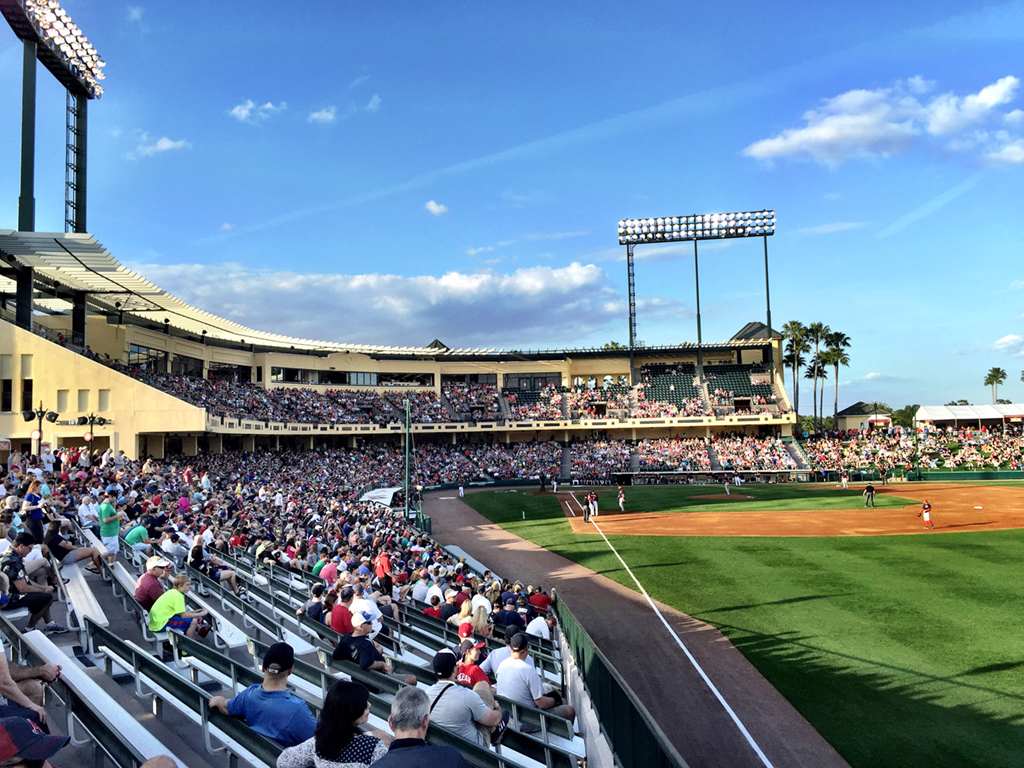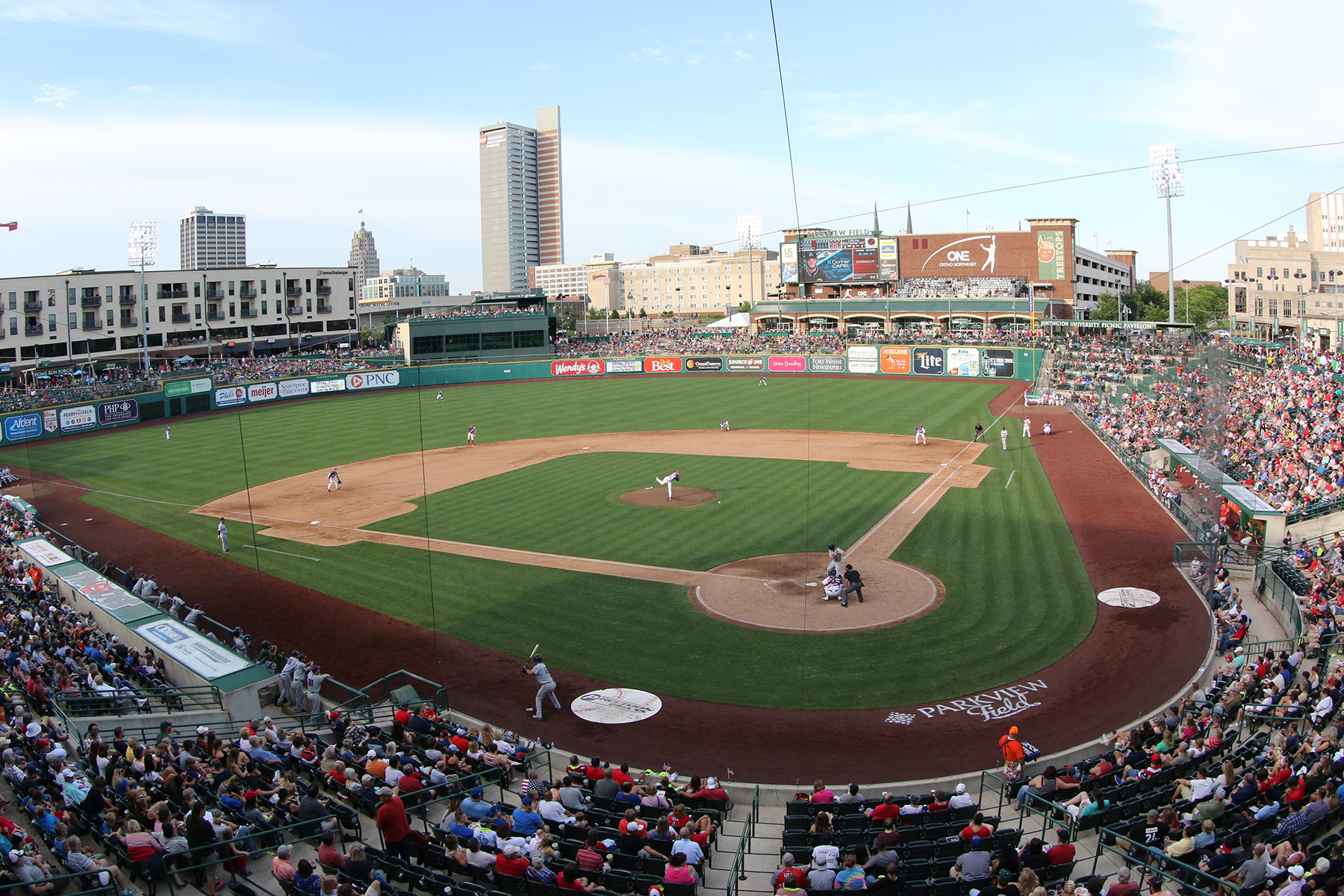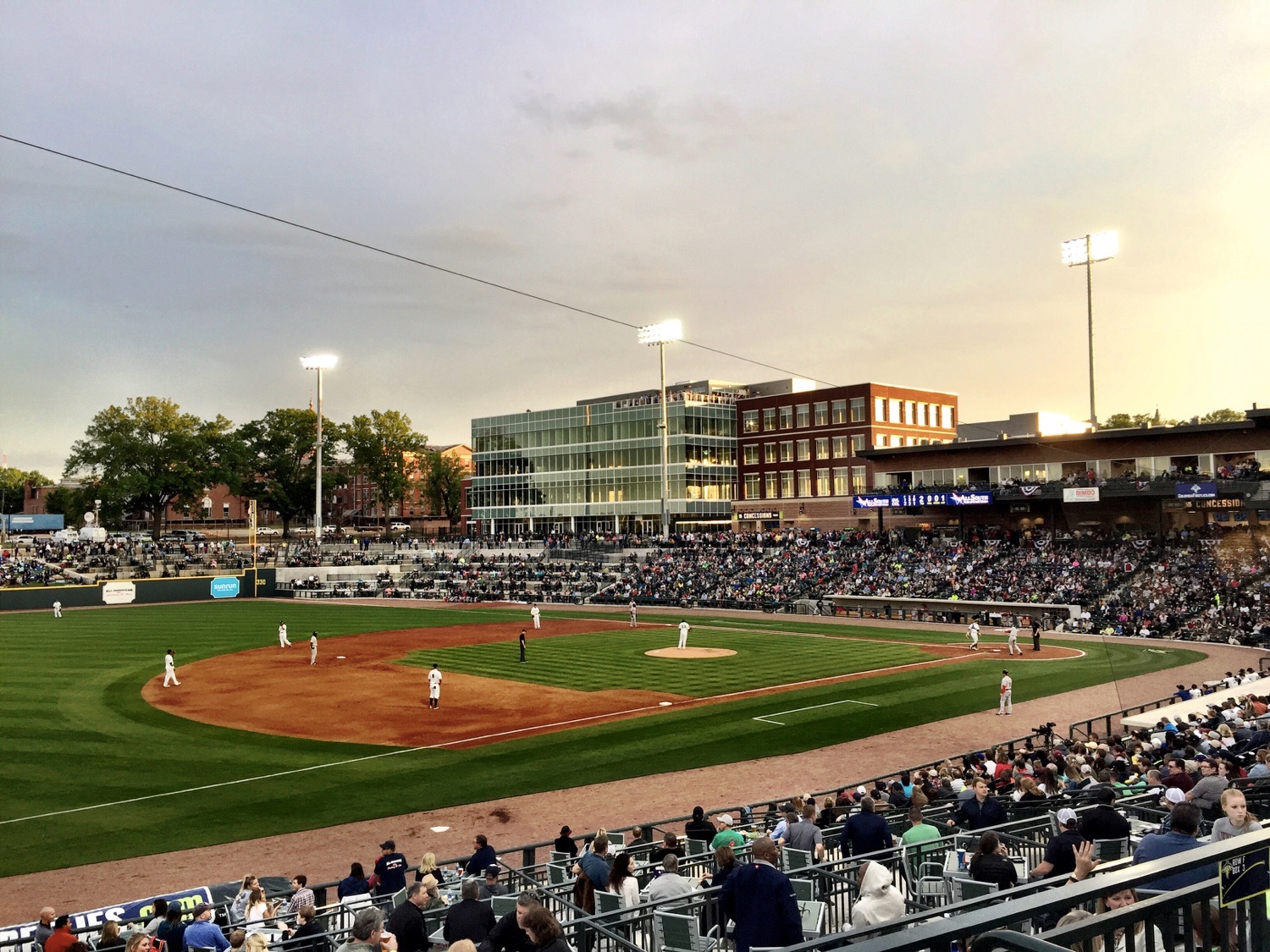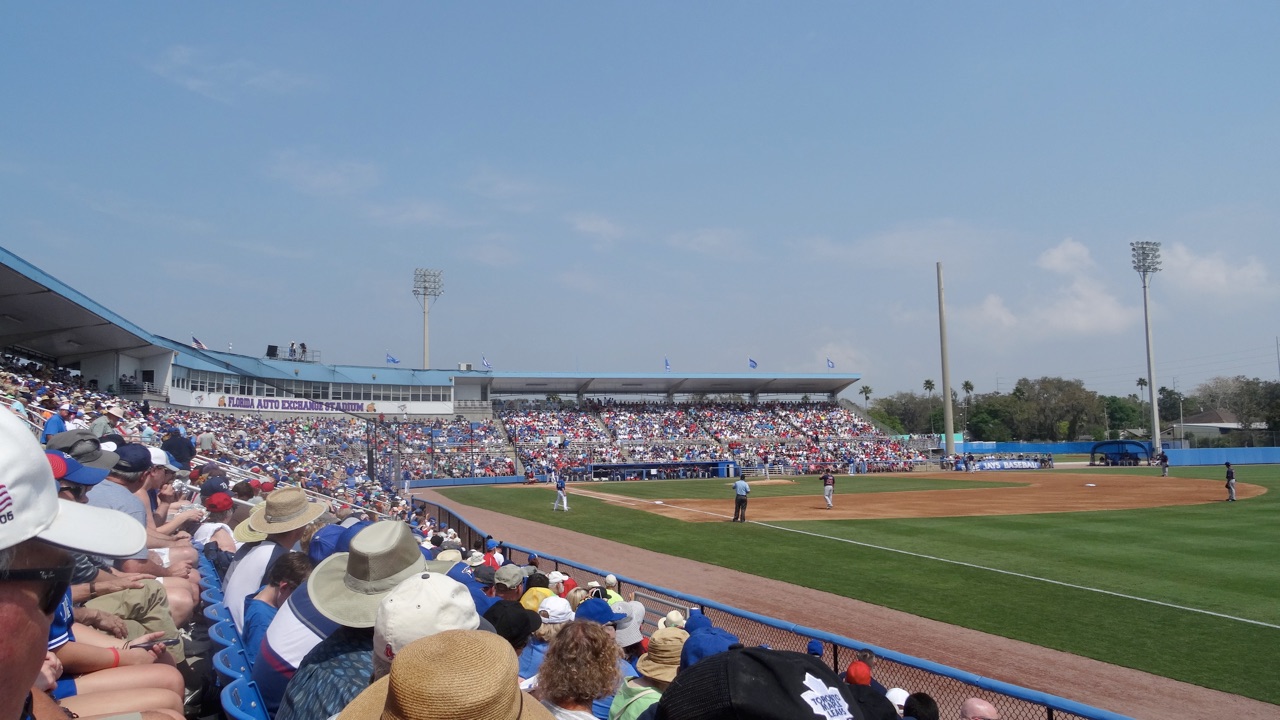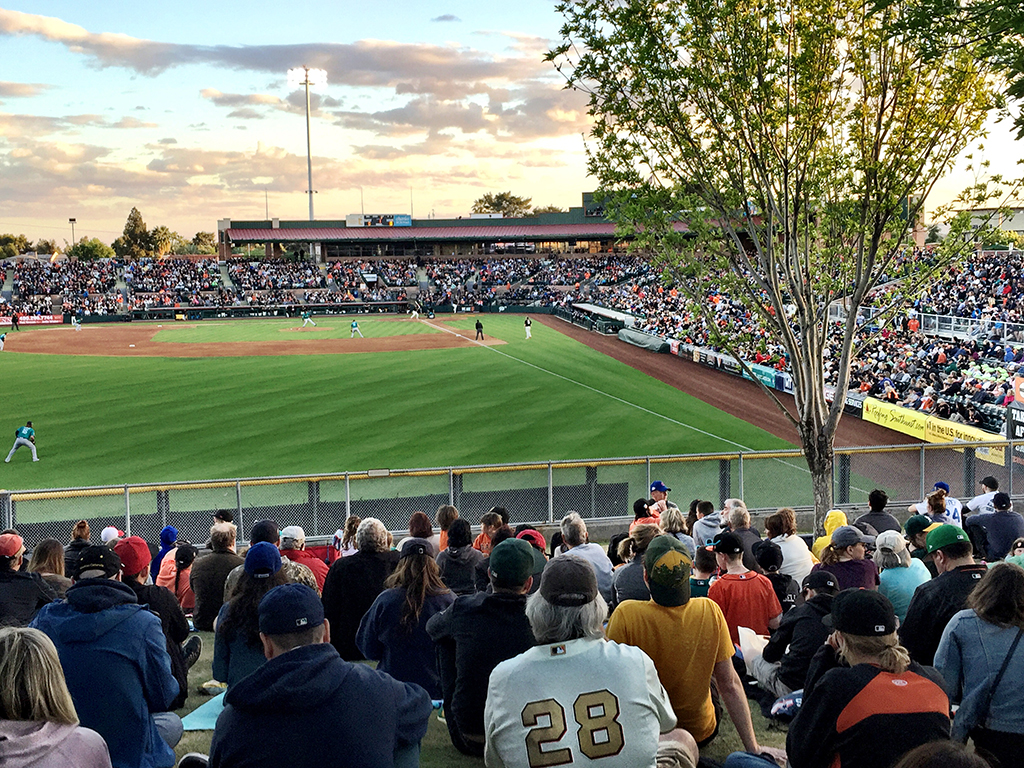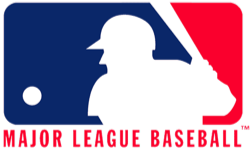 The backbone of any successful MLB franchise is a successful player-development system. And these days successful player development means strong MiLB and spring-training facilities. We continue our ranking of MLB organizations by the quality of their player-development facilities with part two, covering organizations 24-19.
The backbone of any successful MLB franchise is a successful player-development system. And these days successful player development means strong MiLB and spring-training facilities. We continue our ranking of MLB organizations by the quality of their player-development facilities with part two, covering organizations 24-19.
There are teams with some definite player-development philosophies, like the Atlanta Braves, who prefer owning and operating their affiliates, and the Chicago White Sox, who centralize affiliates for the most part in North Carolina and the South. Others, it seems, don’t have much of a philosophical bent and evaluate each affiliate separately. We know every MLB team wants the perfect player-development system, but perfection is hard to achieve. Hence these ratings, new for 2018.
No black-box methodology here. We asked former GMs, broadcasters past and present, and journalists with expertise in specific leagues to rank facilities based on four criteria: player facilities, fan experience, proximity and stability. Player facilities include clubhouses, workout spaces, quality of batting/pitching cages, meeting spaces and cafeteria/nutritional services. The fan experience covers the physical condition of the ballpark, concessions and in-game entertainment. Proximity covers to what extent players are shuffled around; being closer to the MLB parent and other MiLB affiliates is always a good thing. Finally, stability covers the length of the current affiliation deal and expectations of the future. We cover every level of MiLB affiliation (including MiLB teams owned by the parent), as well as spring-training facilities. Spring complexes are increasingly used as year-round facilities: after spring training ends, complexes are used for rehabs, extended-spring workouts and potentially MiLB play, as well as hosting Rookie-league games.
Each level of play was assigned a potential score in each category, with AAA and spring-training facilities receiving the highest number of potential points, decreasing by level of play. There are two teams with two Rookie-level affiliates—the Reds and the Royals—and that commitment to development is reflected in the scores. We asked our experts to limit their responses to ballparks and spring facilities they’ve actually visited, and their responses are reported here in aggregated form. No single opinion dominates any ranking, as multiple feedbacks are reflected in every instance.
We present the rankings from bottom to top, with daily stories through next Wednesday.
24. Houston Astros
Strengths: Fan experience, stability Weaknesses: Proximity
The fan experience is solid at most levels of the system, and the slate of affiliates is strong overall. That said, the Astros have room to move up the list, and figure to make gains in 2019. Jim Perry Stadium has made for a decent temporary home, but the Buies Creek Astros (High A; Carolina League) will improve their situation with a move next year to a new downtown Fayetteville ballpark. If a rumored shift of Class AAA operations from Fresno to Round Rock does happen after the 2018 season, it would provide another boost for the Astros, particularly in terms of proximity and stability.
| Level | Player Facilities | Fan Experience | Proximity | Stability | Potential |
| AAA (Fresno Grizzlies) | 6 | 7 | 5 | 4 | 10 |
| AA (Corpus Christi Hooks) | 7 | 8 | 9 | 9 | 9 |
| High A (Buies Creek Astros) | 5 | 5 | 5 | 6 | 8 |
| Low A (Quad Cities River Bandits) | 6 | 7 | 5 | 5 | 7 |
| SSA (Tri-City ValleyCats) | 4 | 3 | 2 | 4 | 4 |
| Spring Training | 8 | 7 | 6 | 8 | 8 |
| TOTALS | 36 | 37 | 32 | 36 | 46 |
| TOTAL SCORE: | 141 |
23. Atlanta Braves
Strengths: Proximity, stability Weaknesses: Fan experience
By owning most of their affiliates and placing them in the South, the Braves do themselves considerable favors when it comes to proximity and stability. The system lacks a true standout ballpark when it comes to the fan experience, but most of the club’s facilities are functional for fans and players alike. Spring training operations will shift from Champion Stadium at the ESPN Wide World of Sports Complex to a new facility in North Port, FL in 2020, leaving the Braves with at least one unstable situation in the interim.
| Level | Player Facilites | Fan Experience | Proximity | Stability | Potential |
| AAA (Gwinnett Stripers) | 8 | 6 | 10 | 9 | 10 |
| AA (Mississippi Braves) | 7 | 6 | 7 | 8 | 9 |
| High A (Florida Fire Frogs) | 6 | 5 | 7 | 5 | 8 |
| Low A (Rome Braves) | 5 | 5 | 6 | 6 | 7 |
| Rookie (Danville Braves) | 3 | 3 | 3 | 4 | 4 |
| Spring Training | 6 | 7 | 7 | 4 | 8 |
| TOTALS | 35 | 32 | 40 | 36 | 46 |
| TOTAL SCORE: | 143 |
23. San Diego Padres
Strengths: Player facilities, fan experience, stability Weaknesses: Proximity
This is truly a mixed system. On one hand, the El Paso Chihuahuas (Class AAA; Pacific Coast League) and Fort Wayne TinCaps (Low A; Midwest League) can claim to play in two of the best ballparks at their respective levels (Fort Wayne’s Parkview Field is shown above) and the Lake Elsinore Storm (High A; California League) are one of the model franchises in their league. At the same time, the Padres are not among the elite in any one category and are lagging at the Class AA level. The San Antonio Missions (Class AA; Texas League) will leave Nelson Wolff Stadium for a new Amarillo ballpark in 2019, a move that would provide a considerable boost to the Padres if they remain the parent club.
| Level | Player Facilites | Fan Experience | Proximity | Stability | Potential |
| AAA (El Paso Chihuahuas) | 9 | 9 | 8 | 9 | 10 |
| AA (San Anotnio Missions) | 4 | 4 | 6 | 4 | 9 |
| High A (Lake Elsinore Storm) | 7 | 7 | 7 | 8 | 8 |
| Low A (Fort Wayne TinCaps) | 7 | 7 | 4 | 7 | 7 |
| SSA (Tri-City Dust Devils) | 3 | 2 | 1 | 2 | 4 |
| Spring Training | 7 | 7 | 6 | 8 | 8 |
| TOTALS | 37 | 36 | 32 | 38 | 46 |
| TOTAL SCORE: | 143 |
21. New York Mets
Strengths: Stability Weaknesses: Proximity, fan experience
The good news for the Mets is that all trends in recent years have been positive. Spirit Communications Park (shown above) has been met with acclaim since opening for the Columbia Fireflies (Low A; Sally League) in 2016, while the Binghamton Rumble Ponies (Class AA; Eastern League) took some steps to improve the fan and player experiences at NYSEG Stadium prior to last season. That said, the Mets are faced with sending their top farm team to Las Vegas for one more season before it is placed in Syracuse. Buying the Syracuse Chiefs (Class AAA; International League) and making the club their Class AAA affiliate will improve the Mets’ standing in terms of both stability and proximity, but NBT Bank Stadium, will likely need upgrades in the coming years. Renovations are currently on tap at First Data Field, home to Mets spring training and the St. Lucie Mets (High A; Florida State League).
| Level | Player Facilities | Fan Experience | Proximity | Stability | Potential |
| AAA (Las Vegas 51s) | 7 | 5 | 3 | 3 | 10 |
| AA (Binghamton Rumble Ponies) | 5 | 6 | 7 | 8 | 9 |
| High A (St. Lucie Mets) | 7 | 6 | 6 | 8 | 8 |
| Low A (Columbia Fireflies) | 7 | 6 | 5 | 7 | 7 |
| SSA (Broolyn Cyclones) | 2 | 2 | 3 | 3 | 4 |
| Rookie (Kingsport Mets) | 3 | 3 | 3 | 3 | 4 |
| Spring Training | 6 | 6 | 6 | 8 | 8 |
| TOTALS | 37 | 34 | 33 | 40 | 50 |
| TOTAL SCORE: | 144 |
20. Toronto Blue Jays
Strengths: Stability Weaknesses: Fan experience, proximity
If needed renovations to Dunedin Stadium and the off-site Englebert Complex move forward as expected for 2020, the Blue Jays stand to raise their spring training rankings and offer a better experience for Dunedin Blue Jays (High A; Florida State League) games. Proximity is an issue, particularly at the lower levels, as the Bluefield Blue Jays (Rookie; Appalachian League) and Vancouver Canadians (Short Season A; Northwest League) are about as far apart as imaginable. That said, the well-maintained and well-run Scotiabank Field at Nat Bailey Stadium provides the Blue Jays with a strong experience at the Short Season A level, likely a reason the club is willing to deal with Vancouver’s long distance from other affiliates.
| Level | Player Facilites | Fan Experience | Proximity | Stability | Potential |
| AAA (Buffalo Bisons) | 7 | 7 | 8 | 7 | 10 |
| AA (NH Fisher Cats) | 7 | 7 | 8 | 8 | 9 |
| High A (Dunedin Blue Jays) | 5 | 4 | 4 | 7 | 8 |
| Low A (Lansing Lugnuts) | 6 | 5 | 5 | 6 | 7 |
| SSA (Vancouver Canadians) | 3 | 4 | 2 | 4 | 4 |
| Rookie (Bluefield Blue Jays) | 2 | 3 | 2 | 3 | 4 |
| Spring Training | 5 | 4 | 5 | 8 | 8 |
| TOTALS | 35 | 34 | 34 | 43 | 50 |
| TOTAL SCORE: | 146 |
19. San Francisco Giants
Strengths: Stability, proximity, fan experience Weaknesses: Player facilities
A disclaimer is in order: the Augusta GreenJackets (Low A; Sally League) will not move into SRP Park until April, so it is hard now to give a concrete ranking to that facility. That said, it should be a vast upgrade over Lake Olmstead Stadium, and the Giants are committed to Augusta through 2020. The Richmond Flying Squirrels (Class AA; Eastern League) have long been on the search for a replacement of The Diamond, but the club gets credit for doing what it can to provide a strong fan experience there in the interim. On paper, the geographical arrangement is scattered, but San Jose Giants (High A; California League) and Sacramento River Cats (Class AAA; Pacific Coast League) play in strong markets near San Francisco, and the Giants seem content with the east coast contingent of Richmond and Augusta.
| Level | Player Facilities | Fan Experience | Proximity | Stability | Potential |
| AAA (Sacramento River Cats) | 7 | 8 | 10 | 9 | 10 |
| AA (Richmond Flying Squirrels) | 5 | 6 | 4 | 6 | 9 |
| High A (San Jose Giants) | 6 | 6 | 8 | 8 | 8 |
| Low A (Augusta GreenJackets) | 6 | 6 | 4 | 6 | 7 |
| SSA (Salem-Keizer Volcanoes) | 3 | 3 | 3 | 4 | 4 |
| Spring Training | 7 | 7 | 7 | 8 | 8 |
| TOTALS | 34 | 36 | 36 | 41 | 46 |
| TOTAL SCORE: | 147 |


